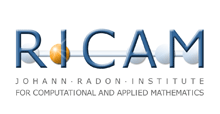The project "Mathematical algorithms and software for ELT adaptive optics" is part of the In-Kind contributions of Austria to the European Southern Observatory (ESO). The project is carried out jointly by Institute for Industrial Mathematics of the University of Linz, Johann Radon Institute for Computational and Applied Mathematics (RICAM) and Industrial Mathematics Competence Center (IMCC) in Linz. The aim of the project is the development of mathematical methods for different types of adaptive optics technology such as single-conjugate adaptive optics (SCAO), multi-conjugate adaptive optics (MCAO) and multi-object adaptive optics (MOAO). The ESO maintains one of the world's biggest telescopes utilizing adaptive optics called the Very Large Telescope (VLT) on mount Paranal in Atacama desert and is developing the European Extremely Large Telescope (E-ELT).
Adaptive Optics (AO) is a technology which allows to compensate for the rapidly changing optical distortions arising during the imaging process. In ground-based telescopes, the light coming from the astronomical objects is being distorted by the turbulent nature of the atmosphere caused by, e.g., changing temperature and wind conditions. Adaptive optics is used in large scale telescope imaging in order to enhance the resolution of the images and to avoid costly post-processing. Equipped with the AO correction, the large ground-based telescopes are able to compete with the space telescopes with respect to the accuracy of the reconstruction.
The AO mechanism is based on the measurements of the wavefront aberration and produces commands which are applied to deformable mirrors that correct the aberration. However, the correction should be fast enough, in order to keep up with the rapidly changing atmosphere. Fast computation of the corrections from a huge amount of the censored data with acceptable quality is one challenge in the modern AO technology.
Another important issue is the fact that, for a larger field of view, the mathematical model which describes the correction process becomes ill-posed. In practice, it means that small errors arising in the measurement process may cause arbitrarily large discrepancies in the obtained corrections, making them unusable. In order to overcome the negative effects of the ill-posedness, sophisticated methods from the field of inverse problems, such as regularization, have to be applied.
The AO mechanism is based on the measurements of the wavefront aberration and produces commands which are applied to deformable mirrors that correct the aberration. However, the correction should be fast enough, in order to keep up with the rapidly changing atmosphere. Fast computation of the corrections from a huge amount of the censored data with acceptable quality is one challenge in the modern AO technology.
Another important issue is the fact that, for a larger field of view, the mathematical model which describes the correction process becomes ill-posed. In practice, it means that small errors arising in the measurement process may cause arbitrarily large discrepancies in the obtained corrections, making them unusable. In order to overcome the negative effects of the ill-posedness, sophisticated methods from the field of inverse problems, such as regularization, have to be applied.


